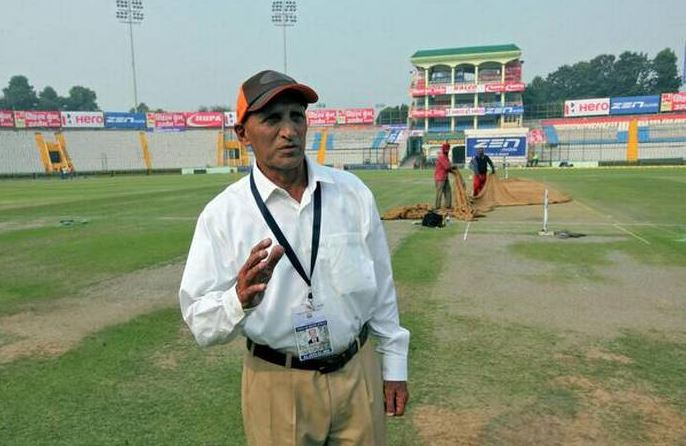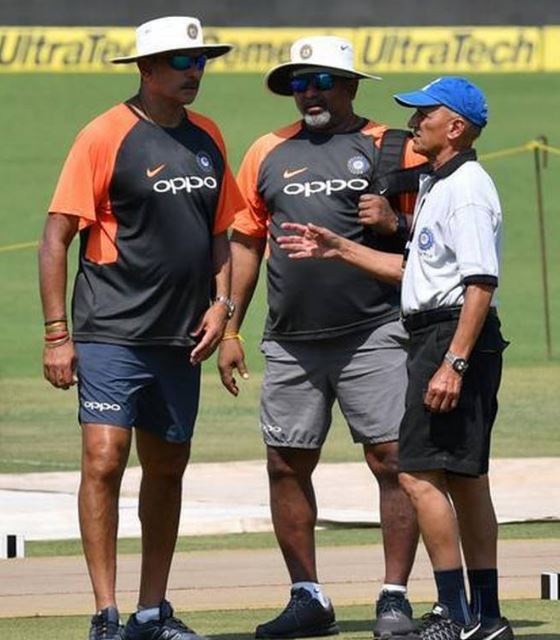In 2016 after defeating England by 246 runs in Vizag when Team India was the no.1 Test team which is continuing till date, the skipper Virat Kohli had assured that he is aware of the fact that even in domestic conditions, their fast bowler also plays a crucial role as compare to their spinners. Two years later, India’s fast bowling bench strength is showing variety and depth which has been unheard of in the history of Indian cricket.

The bowlers like of Bhuvneshwar Kumar, Jasprit Bumrah and Umesh Yadav have emerged as weapons of choice for India while touring overseas with Shami and experienced campaigner Ishant Sharma spearheading a pace battery capable of picking up 20 wickets in a Test match more often than not, without bothering the conditions.
Talking about same, BCCI chief curator, Daljit Singh said, “It didn’t happen overnight.”
ALSO READ: Virat Kohli supports Ravichandran Ashwin on his latest SG ball comment
In the 2015-16 home season, BCCI was under scrutiny when nine matches were reported to have been played on doctored pitches. Saurashtra, for instance, had resorted to raging turners where left-arm spinner Ravindra Jadeja bagged six five-wicket hauls on the trot.
In order to tackle such issues, the concept of neutral curators was introduced last season with the rider that the curators will be from the same zone so that they have the requisite knowledge of the soil. Describing the same, Mr. Singh said, “We got positive feedback during the last domestic season, so the board will continue with neutral curators in the upcoming 2018-19 Ranji Trophy, a move that ensured that there were no two-day finishes or rank turners.”

Rajkot hosted its second-ever Test when India locked horns with West Indies last week, and during the same, there was around 5-7 mm grass on the first day, which was a familiar sight for the Indian pacers who had bowled on England wickets that reportedly had grass as tall as 9-12 mm. However, moisture and grass is quite a usual phenomenon for a Test match, but in India, it wears off as the Test Progresses.
Describing the same, Daljit said, “For hardness and bounce, the depth of the grass is also important. We look for something (grass) that grows in our country. We did it to make the wicket seamer friendly on the first two days, with the spinners coming into play on day three and four. Nothing unusual. Indian pitches, in general, contain less smectite, which is best for pitches because of small particle size (0.001 microns) and large surface area. Pitches in Australia and South Africa have smectite in abundance. The clay is so light; it floats in water!”
ALSO READ: Ravi Shastri Defines The Importance Of Rohit Sharma
However, before the overseas to the countries like Australia, England, and South Africa, the team management’s keenness to prepare the players to face fast bowlers on green tracks abroad is understood. Having said that, completely seaming pitches instead of rank turners — seemed to have gone too far before Anil Kumble, head of the BCCI technical committee at the time (2102-15), approached Daljit with a suggestion.
The head curator suggested, “Kumble pointed out that we had developed a good bench strength when it comes to seamers but our batsmen were struggling against spinners like Moeen Ali. That, sort of, triggered the transition to wickets (in India) where the ball would start spinning on the third and the fourth day.”

Talking about the rating of pitches by the BCCI, Daljit said, “There are three marks for the pitch each day, a total of 12. No marks are given if the pitch is labelled poor. They can be rated average, good or very good. Then there are two marks for the outfield, two for miscellaneous factors and one for the square, a total of 17 out of which only the pitch scores vary over the course of the contest. The remaining five are frozen after the first day’s play.”
ALSO READ: Things To Know About The Ekana Stadium In Lucknow
Daljit narrates an incident when Madhya Pradesh Cricket Association (MPCA) secretary Sanjay Jagdale told him that the (Indian) top-order is scoring 250 but the tail is getting out for 30 runs and asked him to prepare wickets where everyone can play seam bowling.
Talking about the same, Mr. Singh said, “It’s because of the efforts made to ensure that the lower-middle order can bat on pitches that aid seam, swing and bounce.”



